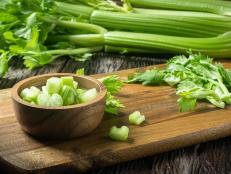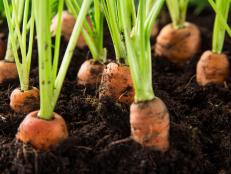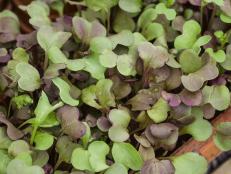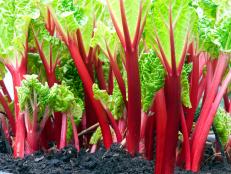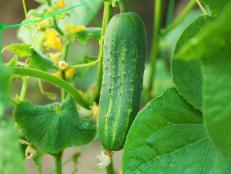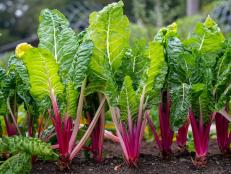How to Grow Sugar Snap Peas
Harvest sugar snap peas and pop them in your mouth, toss them into salads or cook them as a healthy side dish.
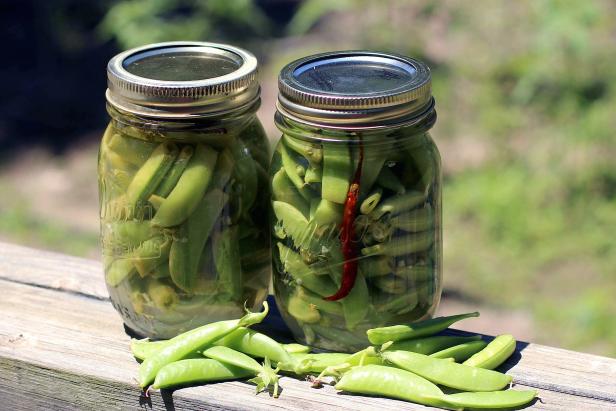
Photo by Mick Telkamp
Sugar snap peas can be eaten raw, cooked or whole, and they're a great choice for pickling.

Learn how to grow sugar snap peas, and you’ll have tender, fresh peas to eat straight from the garden or to stir-fry, sauté or steam and serve at the table. Give your sugar snap peas a head start by loosening the soil in your garden in the fall. These members of the legume family thrive in well-drained soil that’s rich in organic matter, so work in some compost or well-rotted manure. Remove any sticks, rocks or other debris.
If you have clay-like, heavy soil, add some sand to help improve drainage. It’s a good idea to use a soil test kit or ask your extension service agent if he can test your soil for you, so you’ll know if you need any amendments. Sugar snap peas don’t usually need much fertilizer but follow your soil test results.
How and When to Plant Sugar Snap Peas
Plant the pea seeds after the last spring frost, while the temperatures are between about 45 to 57 degrees Fahrenheit. Sugar snap peas, Pisum sativum var. macrocarpon, are an easy-to-grow, cool weather crop. Insects and diseases don’t usually bother them.
If you live in a cool climate, plant the seeds directly into the garden in a well-drained spot that gets full sun for most of the day. In warm regions, plant them in an area that gets full morning sun and partial shade during the hottest part of the day.
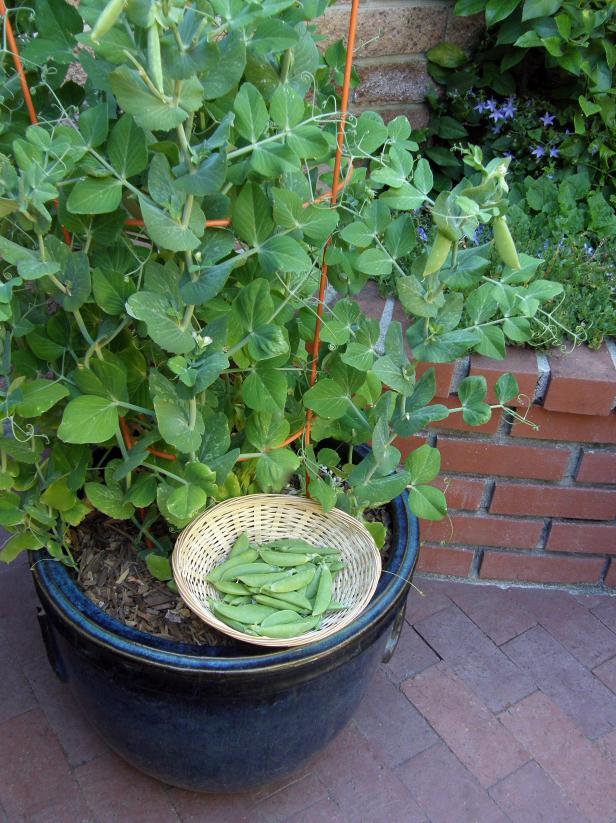
Renee’s Garden Seeds at ReneesGarden.com
'Little Crunch' is a sugar snap pea that grows 24 to 30 inches tall in containers.
To help increase your yield and encourage the plants to grow vigorously, apply a powdered inoculant with a beneficial bacterium to the peas. Sprinkle the inoculant over the pea seeds when you’re planting them or dust them with it before you plant.
Plant the pea seeds 1 to 1-1/2 inches deep and about 2 inches apart, with 18 to 24 inches between rows, or follow the directions on your seed package for the variety you’re growing. Rows of bush sugar snaps can usually be planted 12 to 18 inches apart. Most varieties will sprout in seven to 10 days. In some areas, you can plant pea seeds in the summer, about two months before the first fall frost. Don’t worry if the temperatures dip below freezing or a light frost hits after the peas sprout. They can tolerate cold and frost for short periods of time.
Once the plants are up, water them enough to keep the soil evenly moist, and expect to water more often if rain is scarce. Mulch around the plants to help retain moisture and prevent weeds from popping up. Hoe lightly to weed or simply pull weeds and grasses by hand.
Choose from climbing or bush sugar snap pea varieties. Bush peas can grow to three feet tall, so give them something to climb on or they’ll sprawl onto the ground. Varieties that are compact enough to grow in containers may not need supports at all. Climbing varieties can reach six to eight feet in height and should be trellised. Since the pea tendrils will wrap around supports about 1/4-inch in diameter, add twine, string, small wire mesh or netting to the trellis to help them climb.
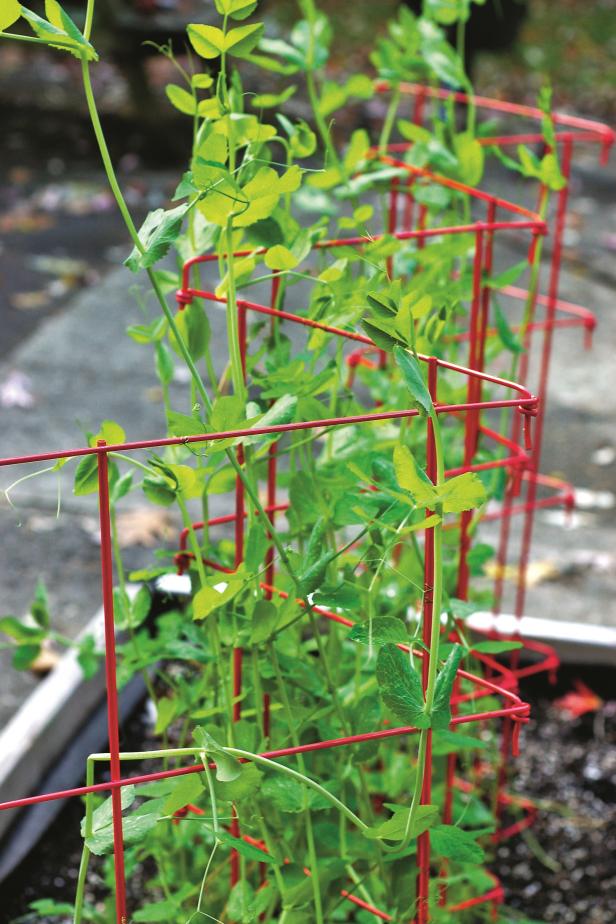
Gardener’s Supply Company/gardeners.com
Add an expandable, powder-coated steel trellis just before planting the pea seeds, so you'll know where to place them.
You can also make a “teepee” from bamboo poles or wooden stakes for climbing varieties to grow on. Insert the poles or stakes far enough into the ground to keep them stable, tie them together at the top and wrap twine between them to give the plant vines more support. Be sure to put something over the ends of the supports so no one stumbles into them and gets hurt.
Harvest and Enjoy Your Sugar Snap Peas
The sugar snap peas will be ready to harvest in six to eight weeks from sowing. Harvest them when the pods are green and still tender, and the peas inside are just starting to swell. Snap off the tough ends and pull off any strings, and eat the entire pods or just the peas inside.
Sugar snap peas grow fast, so check them often, or they’ll become starchy and tough and lose their sweet flavor. Harvesting often also encourages the plants to keep producing. Cook sugar snaps briefly, so they'll stay tender, and season them with butter, salt and pepper if desired. They can also be frozen or pickled for later use. After the pea plants stop bearing, work them into the soil to provide nitrogen for another crop.








